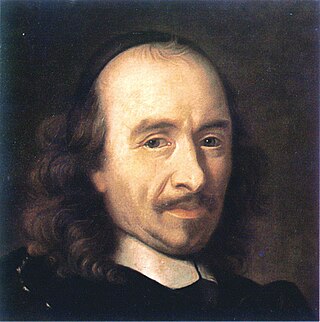
Pierre Corneille was a French tragedian. He is generally considered one of the three great seventeenth-century French dramatists, along with Molière and Racine.
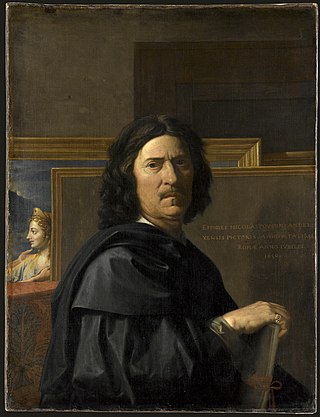
Nicolas Poussin was the leading painter of the classical French Baroque style, although he spent most of his working life in Rome. Most of his works were on religious and mythological subjects painted for a small group of Italian and French collectors. He returned to Paris for a brief period to serve as First Painter to the King under Louis XIII and Cardinal Richelieu, but soon returned to Rome and resumed his more traditional themes. In his later years he gave growing prominence to the landscape in his paintings. His work is characterized by clarity, logic, and order, and favors line over color. Until the 20th century he remained a major inspiration for such classically-oriented artists as Jacques-Louis David, Jean-Auguste-Dominique Ingres and Paul Cézanne.

Louis XIII was King of France from 1610 until his death in 1643 and King of Navarre from 1610 to 1620, when the crown of Navarre was merged with the French crown.

Armand Jean du Plessis, Duke of Richelieu, known as Cardinal Richelieu, was a French statesman and clergyman. He was also known as l'Éminence rouge, or "the Red Eminence", a term derived from the title "Eminence" applied to cardinals and the red robes that they customarily wear.

Nicolas-Claude Fabri de Peiresc, often known simply as Peiresc, or by the Latin form of his name, Peirescius, was a French astronomer, antiquary and savant, who maintained a wide correspondence with scientists, and was a successful organizer of scientific inquiry. His research included a determination of the difference in longitude of various locations in Europe, around the Mediterranean, and in North Africa.
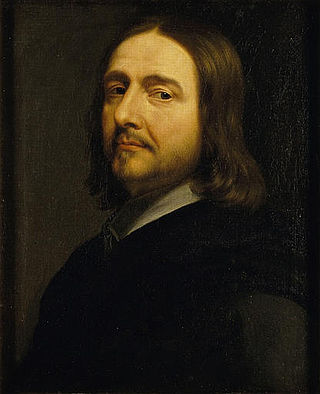
Philippe de Champaigne was a Brabançon-born French Baroque era painter, a major exponent of the French school. He was a founding member of the Académie royale de peinture et de sculpture in Paris, the premier art institution in France in the eighteenth century.

Jacques Lemercier was a French architect and engineer, one of the influential trio that included Louis Le Vau and François Mansart who formed the classicizing French Baroque manner, drawing from French traditions of the previous century and current Roman practice the fresh, essentially French synthesis associated with Cardinal Richelieu and Louis XIII.

Gaspard Dughet, also known as Gaspard Poussin, was a French painter born in Rome.
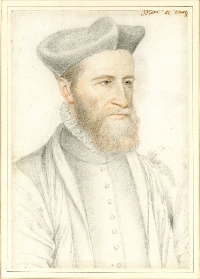
The L'Aubespine family was a French family descended from Claude de l'Aubespine, a lawyer of Orléans and bailiff of the abbey of Saint Euverte in the beginning of the 16th century. His progeny gained distinction in offices connected with the law.
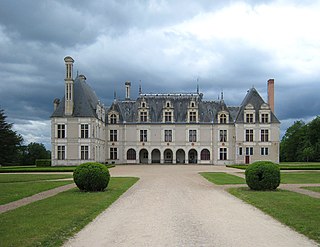
The Château de Beauregard is a Renaissance château in the Loire Valley in France. It is located on the territory of the commune of Cellettes, a little south of the city of Blois and a few miles from other famous Loire châteaux such as Cheverny. Although still inhabited, it can be visited by tourists. The château is renowned for its gallery of portraits decorated in the 17th century with 327 portraits of famous people.

Lazzaro Baldi was an Italian painter and engraver of the Baroque period active mainly in Rome.

Richelieu is a commune in the Indre-et-Loire department in central France.
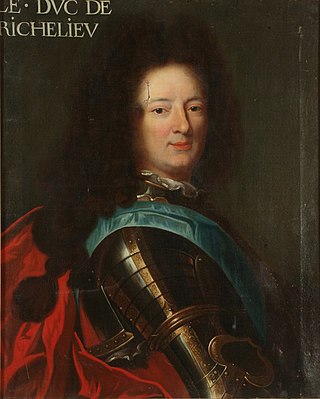
Armand-Jean de Vignerot Du Plessis, duc de Richelieu, was a French naval officer and nobleman. His surname has also been spelled Vignerod Duplessis.

The Four Seasons was the last set of four oil paintings completed by the French painter Nicolas Poussin (1594–1665). The set was painted in Rome between 1660 and 1664 for the Duc de Richelieu, the grand-nephew of Cardinal Richelieu. Each painting is an elegiac landscape with Old Testament figures conveying the different seasons and times of the day. Executed when the artist was in failing health suffering from a tremor in his hands, the Seasons are a philosophical reflection on the order in the natural world. The iconography evokes not only the Christian themes of death and resurrection but also the pagan imagery of classical antiquity: the poetic worlds of Milton's Paradise Lost and Virgil's Georgics. The paintings currently hang in a room on their own in the Louvre in Paris.
By his absolute humility, by his effacement of himself, by his refusal to use any tricks or overstate himself, Poussin has succeeded in identifying himself with nature, conceived as a manifestation of the divine reason. The Seasons are among the supreme examples of pantheistic landscape painting.
Jamais peut-être, dans toute la peinture occidentale, des choses aussi nombreuses et parfois si difficiles n'avaient été dites avec une telle simplicité. Jamais un peintre ne s'était aussi pleinement identifié à l'ordre du monde. Mais cette identification n'est ni « une projection » ni une confidence : là est le sens de cette impersonalité que l'on a pu reprocher à Poussin, et qui fait sa grandeur.
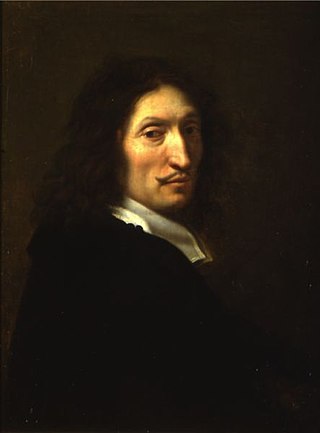
Nicolas Mignard, called Mignard d’Avignon, was a French painter known for his religious and mythological scenes and portraits. He spent most of his active life in Avignon creating religious and mythological paintings for religious institutions and stately homes but ended his career as court painter in Paris.

The siege of Privas was undertaken by Louis XIII of France from 14 May 1629, and the city of Privas was captured on 28 May 1629. It was one of the last events of the Huguenot rebellions (1621-1629).
Events of the year "1642 in France".
François Bluche was a French historian.

The Plague of Ashdod is also known as The Miracle of the Ark in the Temple of Dagon, by the French artist Nicolas Poussin. The painting represents a story from 1 Samuel in the Old Testament. The original painting currently hangs in the Louvre in Paris. Poussin was commissioned to paint The Plague of Ashdod by Fabrizio Valguarnera. Fabrizio Valguarnera was a Sicilian merchant who was put on trial for laundering money through the purchase of this painting; he also commissioned more than one version of this piece. Poussin painted this during a plague that took place in Italy from 1629 to 1631, which influenced his accurate portrayal of the epidemic.
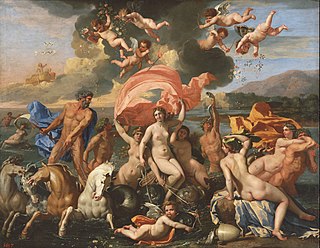
The Triumph of Neptune and Amphitrite by Nicolas Poussin, painted in 1635 or 1636, is a painting housed in Philadelphia in the Philadelphia Museum of Art. It is in oil on canvas and shows a group of figures in the sea near a beach, with putti flying over their heads.
This page is based on this
Wikipedia article Text is available under the
CC BY-SA 4.0 license; additional terms may apply.
Images, videos and audio are available under their respective licenses.

![]() Media related to Nicolas Prévost at Wikimedia Commons
Media related to Nicolas Prévost at Wikimedia Commons















